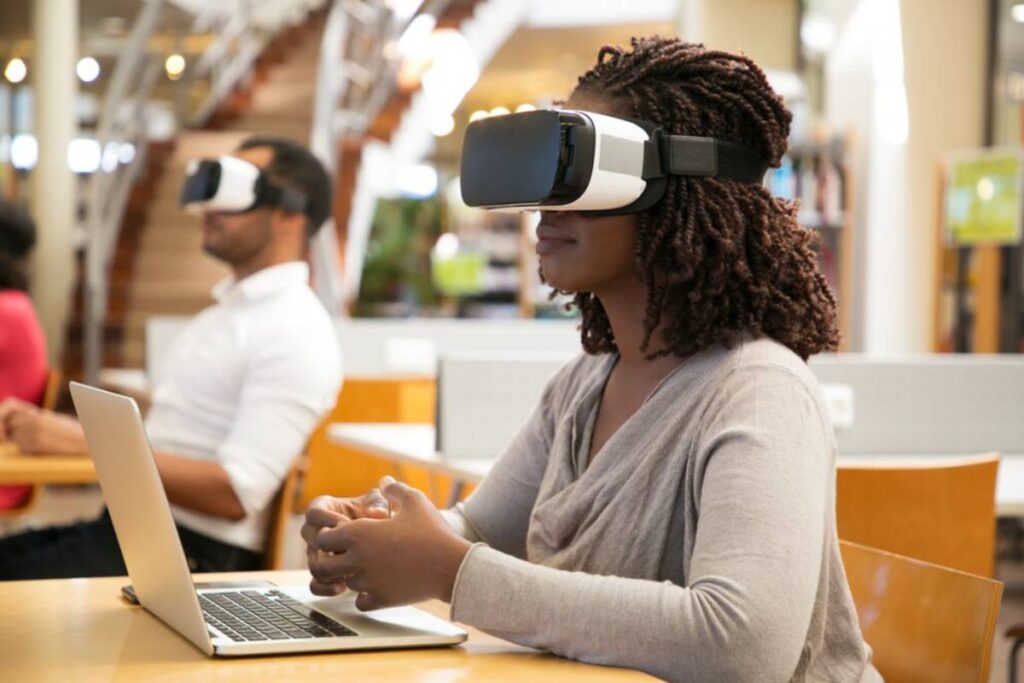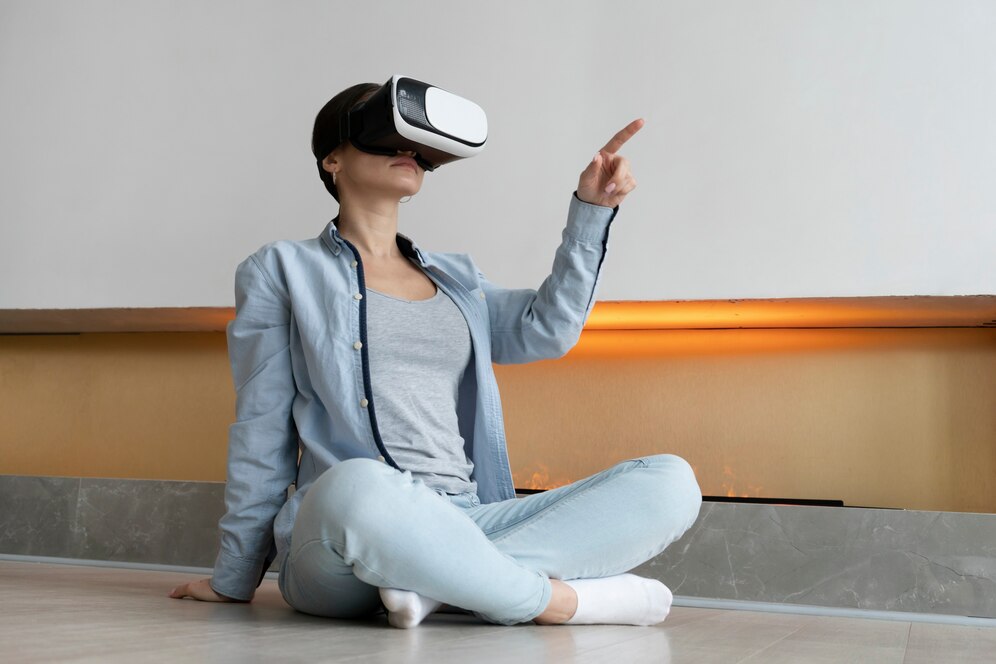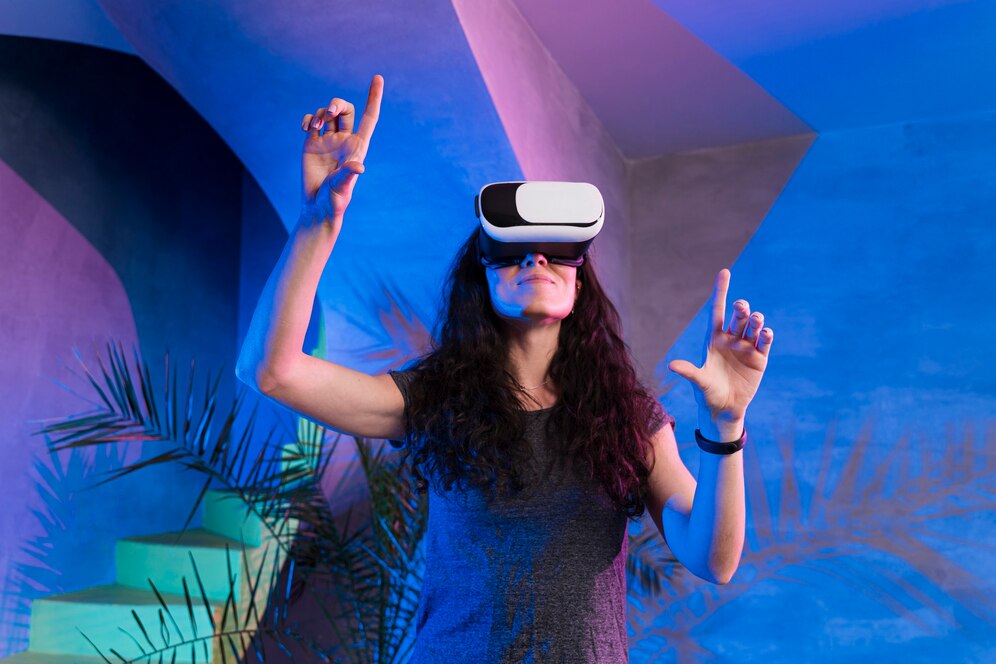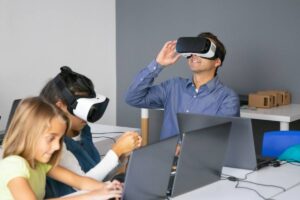The Technology Blog

Exploring the Latest Trends in AR and VR Technologies
Augmented reality (AR) and virtual reality (VR) are no longer futuristic buzzwords. They’re crafting authentic experiences across diverse realms — from gaming to healthcare. As we approach 2025, these technologies are breaking free from trial territory. What was once experimentation is now woven into our everyday interactions.
Dive into our blog as we uncover the AR trends shaping 2025. Discover the latest VR breakthroughs that are redefining our existence. These captivating technologies are transforming how we live, work, and connect.
A Quick Peek into AR and VR

Before diving into the trends, it helps to quickly clarify the difference between the two:
-
Augmented Reality (AR) overlays digital content in the real world using devices like smartphones, tablets, or smart glasses. It enhances the real environment without replacing it.
- Virtual Reality (VR) creates a fully immersive digital environment that replaces the real world. Users typically access VR through headsets and controllers.
Both technologies rely on real-time interaction and spatial awareness, but they serve different purposes and create different experiences.
Key AR Trends in 2025
Augmented reality has seen widespread adoption thanks to its mobile-first approach and flexibility. Here’s what’s driving the latest developments:
1. Smart Glasses Are Getting Smarter
Smart glasses are no longer clunky prototypes. Leading tech firms are releasing lightweight, user-friendly AR wearables that blend into everyday fashion. These devices can display directions, translate signs in real-time, or provide on-the-go notifications — all without pulling out a phone.
As battery life and display clarity improve, smart glasses are likely to become a mainstream tool for work, navigation, and hands-free communication.
2. Retail and E-Commerce Integration
AR is transforming the way we shop. In 2025, more retailers are offering try-before-you-buy experiences through mobile AR apps. Customers can:
- Visualise how furniture fits in their space
- Try on clothes or accessories virtually
- Preview makeup or glasses on their face
This not only improves buyer confidence but also reduces return rates — a major win for online sellers.
3. Enhanced AR in Navigation and Travel
Augmented directions are getting better and more accurate. Apps now provide real-time AR overlays for walking or driving navigation. Instead of reading a map, users see arrows and instructions directly on the street or path ahead.
In tourism, AR is being used for guided tours, historical reconstructions, and location-based storytelling — turning sightseeing into an interactive experience.
4. AR for Workplace Productivity
AR is helping professionals visualise complex data and collaborate remotely. From field technicians using smart glasses to overlay repair instructions to architects showcasing 3D building models on-site — AR tools are becoming essential for hands-on work.
We’re also seeing AR integrations in video conferencing, where participants can share and interact with digital content in real time.
The Latest in VR Innovations
Virtual reality has matured significantly, with better visuals, faster response times, and more interactive environments. Here are the standout developments shaping VR in 2025:
1. More Realistic Avatars and Environments
VR platforms are making lifelike avatars. These avatars copy facial expressions and body movements. They use advanced sensors to do this. Combining highly detailed virtual spaces creates a more natural and engaging user experience.
This realism is especially valuable in social VR platforms, virtual meetings, and training simulations where body language matters.
2. Training and Simulation Across Industries
Healthcare, aviation, defence, and construction use VR for safe, immersive training. Medical students can practice surgeries in VR. Pilots and engineers can also train without any risk.
VR training improves skills and confidence by mimicking real-world conditions. It often costs less than physical simulations.
3. Virtual Workspaces and Collaboration
Remote teams are embracing VR workspaces that go beyond flat video calls. Users can gather in virtual conference rooms. They can brainstorm on 3D whiteboards. Also, they can co-design products in a shared virtual space.
These platforms promote focus, reduce screen fatigue, and create a stronger sense of presence — especially for teams spread across different locations.
4. Expansion of VR in Entertainment

Gaming remains the biggest driver of VR growth. By 2025, VR games will provide richer multi-sensory experiences. They will include full-body tracking, haptic feedback suits, and voice interaction.
VR isn’t just for gaming anymore. People enjoy VR concerts, film experiences, and live sports in virtual stadiums. These events are becoming more popular. These events let users attend from anywhere while feeling as if they’re part of the crowd.
Where AR and VR Converge: Mixed Reality Experiences
One major trend in 2025 is the blending of AR and VR into mixed reality (MR). Mixed reality combines both technologies for hybrid experiences. For instance, it can overlay interactive 3D objects in a real room. Users can also interact with these objects in VR mode.
This convergence is especially useful in:
- Education: Interactive lessons with both AR visuals and VR simulations.
- Retail: Trying out a product in AR, then exploring its features in VR.
- Healthcare: Combining AR overlays for diagnosis and VR for treatment planning.
As hardware becomes more powerful and adaptable, this fluid switch between AR and VR modes becomes more seamless.
The Role of AI and 5G in AR/VR Growth
The backbone of these trends is faster processing and smarter systems.
- AI helps AR/VR apps see their surroundings. It also boosts tracking and makes responses feel more natural.
- 5G networks cut lag and enable smoother streaming of high-res visuals. This is key for real-time interaction in immersive settings.
Together, these technologies are enabling richer, faster, and more reliable experiences.
Challenges Still Ahead
Despite the progress, AR and VR still face certain challenges:
- Cost and Accessibility: High-end VR headsets and smart glasses are pricey. This keeps many people from using them widely.
- User comfort: Motion sickness and eye strain can still be issues for some users during long sessions.
- Privacy concerns: As these technologies collect more real-world data, worries about surveillance and tracking personal information are growing.
Addressing these barriers will be key to their continued growth.
Conclusion: AR and VR Are Evolving Into Everyday Tools

In 2025, AR and VR are no longer niche innovations. They’re weaving themselves into the fabric of our daily lives. From shopping and working to learning and leisure, it’s all evolving.
The latest AR trends shine a spotlight on real-world enhancements for everyday life. Meanwhile, Virtual reality is weaving captivating digital realms that blur the edges of our reality. As hardware vaults forward and software glides like a whisper, their influence grows ever deeper.
The future of AR and VR isn’t merely about visuals — it’s about actions. That exciting future is already taking shape before our eyes.









